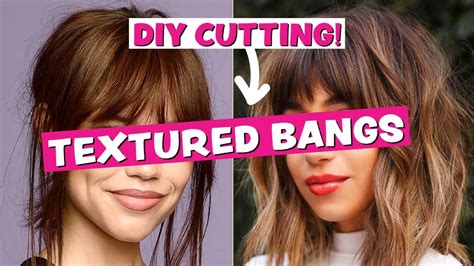Bangs, bangs, bangs! They’re everywhere, from the red carpet to the streets. And for good reason: bangs can instantly change your look, giving you a fresh, new style. But with so many different types of bangs to choose from, it can be hard to know which ones are right for you.

That’s where we come in. We’ve compiled a comprehensive guide to bangs, with everything you need to know to find the perfect style for your face shape, hair texture, and personal style.
1. What Are Bangs?
Bangs are a type of haircut that covers the forehead. They can be any length, from short and wispy to long and sweeping. Bangs can be blunt, choppy, or layered, and they can be styled in a variety of ways.
2. Why Get Bangs?
There are many reasons to get bangs. Bangs can:
- Frame your face and draw attention to your eyes
- Soften harsh facial features
- Hide a large forehead
- Create a more youthful appearance
- Add volume to thin hair
- Change up your look without cutting your hair
3. How to Choose the Right Bangs for Your Face Shape
The first step to choosing the right bangs is to determine your face shape. There are six basic face shapes: oval, round, square, diamond, heart, and oblong.
- Oval: Oval faces are the most versatile, and they can wear any type of bangs.
- Round: Round faces are wider at the cheekbones than they are at the forehead. Bangs that are long and sweeping can help to elongate the face.
- Square: Square faces have a strong jawline and a wide forehead. Bangs that are short and wispy can help to soften the jawline.
- Diamond: Diamond faces are widest at the cheekbones and narrow at the forehead and chin. Bangs that are long and layered can help to balance the face.
- Heart: Heart faces are widest at the forehead and narrow at the chin. Bangs that are short and blunt can help to widen the chin.
- Oblong: Oblong faces are longer than they are wide. Bangs that are long and sweeping can help to shorten the face.
4. How to Choose the Right Bangs for Your Hair Texture
Your hair texture will also play a role in choosing the right bangs.
- Fine hair: Fine hair can be difficult to style, so it’s important to choose bangs that are not too heavy. Wispy bangs or side-swept bangs are a good option for fine hair.
- Thick hair: Thick hair can handle heavier bangs. Blunt bangs or layered bangs are a good option for thick hair.
- Curly hair: Curly hair can be tricky to style, but bangs can be a great way to add definition to your curls. Side-swept bangs or long, layered bangs are a good option for curly hair.
5. How to Style Bangs
Bangs can be styled in a variety of ways, depending on the length and texture of your hair.
- Short bangs: Short bangs can be styled with a blow dryer and a round brush. Start by blow drying the bangs in the direction you want them to go. Then, use the round brush to curl the ends of the bangs under.
- Long bangs: Long bangs can be styled with a blow dryer, a flat iron, or a curling iron. To blow dry long bangs, start by blow drying the roots in the direction you want them to go. Then, use the blow dryer to smooth out the ends of the bangs. To flat iron long bangs, start by flat ironing the roots of the bangs. Then, use the flat iron to smooth out the ends of the bangs. To curl long bangs, start by curling the ends of the bangs with a curling iron. Then, use your fingers to separate the curls and create a more natural look.
6. How to Maintain Bangs
Bangs require regular maintenance to keep them looking their best.
- Wash your bangs daily. This will help to keep them clean and free of oil.
- Trim your bangs every 2-3 weeks. This will help to prevent them from becoming too long and straggly.
- Use a leave-in conditioner. This will help to keep your bangs soft and manageable.
- Avoid using heat styling tools on your bangs. Heat can damage your bangs and make them more difficult to style.
7. Conclusion
Bangs are a great way to change up your look and add some personality to your style. With so many different types of bangs to choose from, there’s sure to be a pair that’s perfect for you. Just be sure to take into account your face shape, hair texture, and personal style when choosing bangs.
Additional Tips
- If you’re not sure what type of bangs to get, ask your stylist for help.
